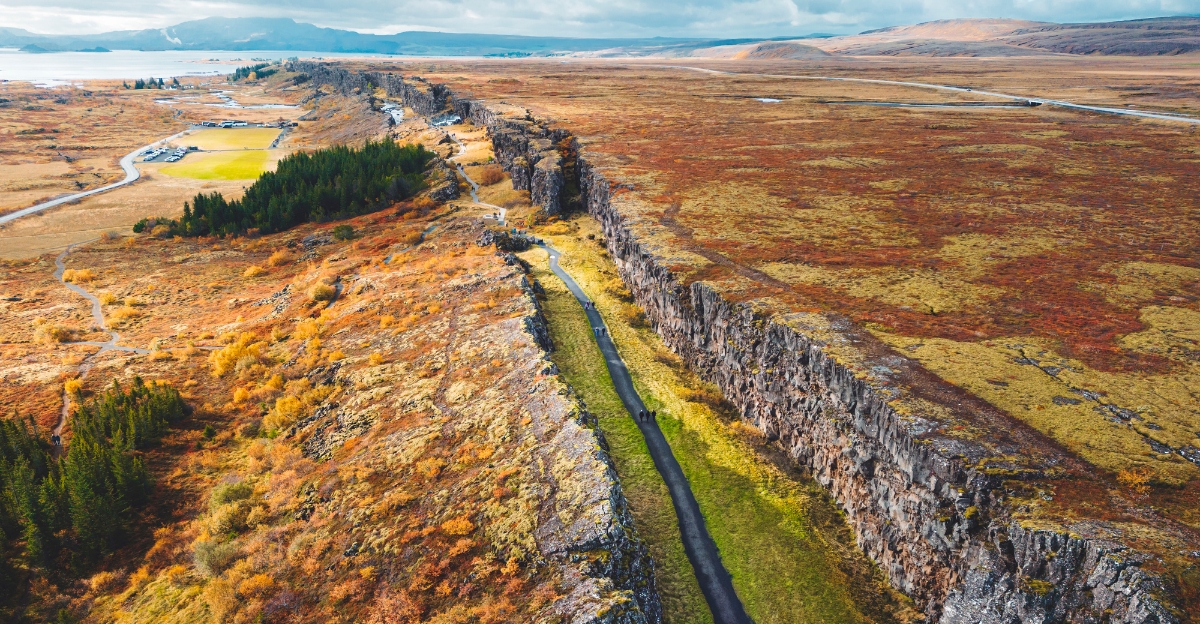
For centuries, Borneo’s mountains had a secret: ancient rocks with magnetic signatures that didn’t match any known tectonic plate. Now, a groundbreaking discovery has finally cracked this geological mystery.
Scientists have discovered the remnants of a colossal tectonic plate called Pontus, which disappeared beneath the Earth’s surface 20 million years ago. This finding not only rewrites Earth’s history of tectonic evolution but also unravels ancient secrets about the planet’s evolution, climate, and resources.
This story is about the destruction, survival, and irrevocable forces that have shaped our planet, and has given us a new look at Earth’s dynamic past.
The Ghost in the Rocks

Geologists studying Borneo’s mountain rocks in 2023 stumbled upon some strange magnetic anomalies. These 120-million-year-old rocks possessed magnetic orientations pointing north, away from their current locations.
Initially considered fragments of the Phoenix plate, further studies indicated inconsistencies. The unique mineral composition and magnetic signs of the rocks said this was something else entirely.
Led by geologist Suzanna van de Lagemaat, a research team from Utrecht University realized that they had discovered evidence of an undiscovered tectonic plate. Naming it Pontus in honor of the ancient Pontus Ocean, they found the first clues to a much larger, hidden story.
Reviving Pontus using Digital Archaeology

Researchers at Utrecht University used a mixture of field observations and digital modeling to reconstruct Pontus’s journey. With 3D simulations, they traced the plate from its birth to its ultimate destruction.
Subduction zones, where tectonic plates are driven into the mantle, usually obliterate all traces of old plates. But Pontus had left behind bits of rock that survived mountain-building processes. Analyzing these leftovers and simulating plate motion, scientists revealed how Pontus gradually tore apart over 140 million years.
This computerized “time machine” allowed researchers to view the chaotic tectonic environment when Pangaea began to break apart, providing them with a blueprint for discovering other missing tectonic plates on our planet.
Pontus and the Pangaea Puzzle

Pontus played a pivotal role in the breakup of the supercontinent Pangaea, a process that began 160 million years ago. With Pangaea’s disintegration, Pontus played a vital role in the tectonic shifts between the Tethyan and Panthalassa oceans.
Its subduction under the Earth’s surface forced volcanic arcs, which were instrumental in forming current landmasses such as Japan and the Philippines. Pontus’s ultimate fate, after being worn down and consumed by surrounding plates, shows the instability of ancient supercontinents.
Its rediscovery helps to fill in essential gaps in the supercontinent cycle, indicating how the Earth’s surface is constantly changing, concealing and revealing evidence of ancient oceans.
Is Pontus Merely an Illusion?

Like many groundbreaking scientific discoveries, not everyone is convinced by the Pontus theory. Some suggest that the Borneo rock fragments could be confused with fragments of the well-recorded Phoenix plate.
They point out that the subducted plates rarely leave a complete record, and magnetic information alone cannot conclusively attest to where they originated. Others suggest Pontus was more a mosaic of many small plates rather than one massive entity.
However, Utrecht’s research team has countered these arguments with evidence from Pontus through mantle tomography-seismic imaging, which maps out a related slab several kilometers deep. Nonetheless, this debate highlights the need for some detective work in scientific enquiry, especially in geology, where ancient clues are often incomplete and controversial.
Diamonds, Volcanoes, and Climate

The destruction of Pontus had profound consequences for Earth’s geology and climate. Subduction is credited with forcing massive volcanic explosions, whose impact reshaped the patterns of the Earth’s climate.
Further, the tectonic plate left its mark in tectonic strain zones, which are now hotspots for earthquakes. Interestingly, some of the Borneo diamond-bearing deposits could result from Pontus’s wide tectonic interactions, since high-pressure conditions pushed precious minerals to the surface.
Pontus’s disappearance also influenced biodiversity; as land bridges were formed, species migrated across Asia, restructuring ecosystems. Learning about Pontus’s fate provides a glimpse into how plate movements shape landscapes, as well as life and resources.
New Tech Confronts Old Earth

Had Utrecht’s team not had access to advanced technology, Pontus may never have been found, and a significant piece of Earth’s history would have been lost forever.
However, the team used superconducting rock magnetometers, apparatus that can detect magnetic fields dating back a billion years, and supercomputers to simulate plate tectonics. These tools, like astronomers’ telescopes, allowed geologists to peer into Earth’s ancient past, where over 95% of oceanic crust has been recycled.
The use of field observations, laboratory research, and computer simulations marks a paradigm shift in earth sciences, where a multi-disciplinary approach has revolutionized our understanding of planetary history.
Mining Earth’s Memory

The discovery of Pontus’s remains opens new possibilities for mineral exploration, but it also raises important ethical questions. Mining ancient tectonic zones could obliterate valuable geological archives, erasing records for the history of the Earth.
Suzanna van de Lagemaat has advocated that those areas be left as “natural museums,” balancing the conflict between resource extraction and scientific integrity. Meanwhile, energy companies are exploring geothermal potential in subduction zones, invigorated by the volcanic legacy that Pontus left behind.
The challenge is to access Earth’s resources responsibly and sensibly so that the pursuit of economic gain does not cost irreplaceable scientific data and world heritage.
What Pontus Tells Us about Earth’s History

The Pontus plate discovery revolutionizes our knowledge of Earth’s past by showing how ancient tectonic forces shaped continents, oceans, and mountain ranges.
Outside of forcing volcanic activity, it helped form mountains, shaping global climate and habitats for millions of species. Further, these tectonic movements allowed land bridges to develop, making migrations possible and influencing the evolution and distribution of wildlife.
By reconstructing Pontus’s movements, scientists can better predict future seismic activity and identify regions that may be rich in minerals. Indeed, this breakthrough connects deep Earth processes with environmental change and the history of life on our planet.
Writing History Again

The rediscovery of Pontus echoes past scientific revolutions, such as the acceptance of plate tectonics during the 1960s. Each new development reminds us that Earth’s surface is a palimpsest, constantly rewritten by powerful geologic forces.
As Suzanna van de Lagemaat observes, “We’re just beginning to read its stories.” Future expeditions, equipped with artificial intelligence and deeper drilling technologies, promise even more astonishing revelations.
The unraveling of Pontus’ tale proves that even lost worlds can resurface, challenging our assumptions and inspiring a deeper appreciation for the dynamic, ever-changing nature of our planet’s history and the secrets it still holds.
Explore more of our trending stories and hit Follow to keep them coming to your feed!

Don’t miss out on more stories like this! Hit the Follow button at the top of this article to stay updated with the latest news. Share your thoughts in the comments—we’d love to hear from you!







